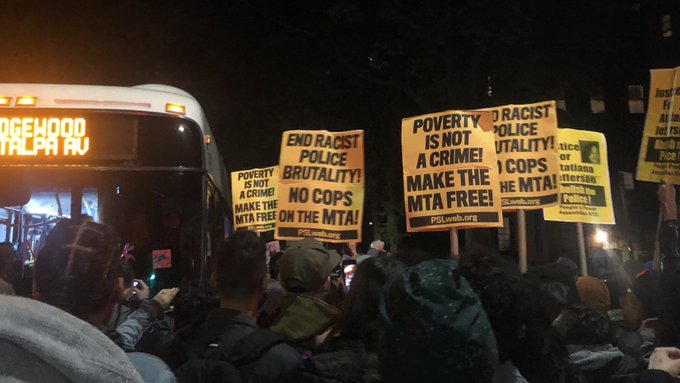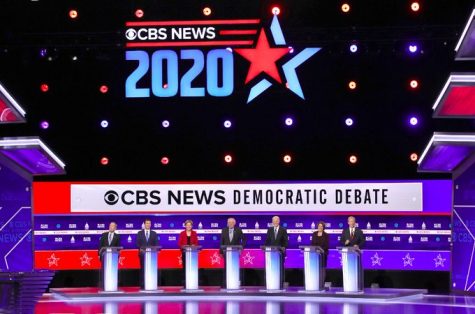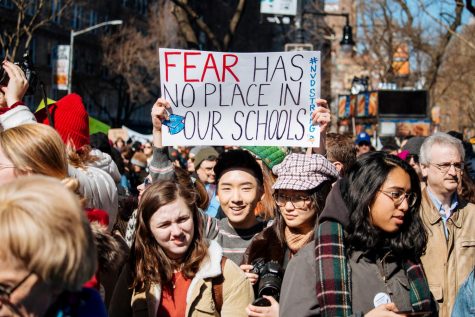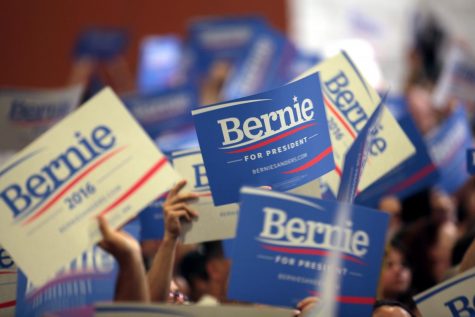MTA Protest Demands are Unreasonable
The protests against the policing of New York City subways are not feasible in their demands of the city. (Courtesy of Twitter)
February 19, 2020
On Jan. 31, hundreds of protestors took to the streets of New York City to object to the policing in the subways. Protestors jumped turnstiles, poured glue into MetroCard readers and smashed video screens in subway stations in acts of outrage. The protests, organized by a group called “Decolonize This Place,” demanded free transit and the complete removal of police from the city’s transit system. While the protestors’ main concern — police brutality in the subways — is a valid one, their methods and goals are questionable.
The spark that ignited this new wave of protests was Governor Andrew Cuomo’s decision to hire 500 new police officers to be deployed in the subways. This, coupled with a few recent high-profile subway policing controversies, raised fears about a police crackdown.
However, the rationale behind the hirings makes sense. For one thing, assaults against transit workers rose 39% in 2019, a fact that is straining ongoing contract negotiations between the Transit Workers’ Union and the Metropolitan Transportation Authority (MTA). The additional officers are intended in large part to combat that increase.
Of course, the bigger issue that the new officers are meant to tackle is rampant fare evasion. The MTA, as we all know, is in dire financial straits. They are projected to face a $1 billion operating budget deficit by 2023. Turnstile jumpers cost the agency an estimated $300 million every year, revenue that the ailing subway desperately needs.
The MTA has numerous sources of revenue, from government subsidies to bridge and tunnel tolls to advertisements in the transit system. In spite of all that, fares remain its biggest source of revenue, accounting for 38% of the agency’s annual earnings.
This is why the protestors’ main demand — free transit — simply isn’t feasible. The revenue stream that comes from those fares is one that the MTA cannot afford to lose. Even if it was, it’s not even clear if making transit free would accomplish anything.
Numerous cities around the world have experimented with making public transit free, usually with disappointing results. The main result is an increase in ridership driven by people who were previously walking or biking — or who were simply drawn to the system by the fact that it’s free, a phenomenon known as “induced demand.” Free transit doesn’t do anything to get people out of their cars or taxis. All it does is place increased stress on the transit system without removing any from the rest of the transportation network. One look at Grand Central during rush hour should show you that this is not a good idea.
Even if intended to be an anti-poverty measure, making transit free is an incredibly blunt tool to use. Many middle and upper-class New Yorkers ride the subways along with the city’s marginalized populations. Making transit free gives them a free ride as well. Removing fares from the entire system is a poorly targeted measure if the goal is to make it easier for low-income people to get around.
Furthermore, the MTA already has a number of programs in place to make the transit system more accessible to low-income or otherwise disadvantaged New Yorkers. City residents over 65, as well as those with disabilities, are eligible for half-price fare for subways and local buses. And, as of last year, so are city residents below a certain income threshold, through the “Fair Fares” program.
All of this makes the protestors’ demands seem misguided at best. For them, free transit is framed as an equity issue. But making transit free would create more problems than it solves and ignores the programs that already exist to aid low-income mobility. Removing police from the subway entirely would likewise create new problems. Fare evasion would surely skyrocket, denying the cash-strapped MTA from even more of its revenue. The subway is not as dangerous now as it was in the 80s and 90s, but crime still occurs, and a police presence is necessary to deter it. The recent rise in assaults on transit workers shows that.
The subway is a resource that almost every New Yorker depends on. The fare is the price we pay to have a functional subway, a common resource that we can all use. These protestors, by evading the fare and vandalizing the system, have shown they do not care about maintaining that resource. If we want to continue to have a subway, we have to treat it with respect.
Sean Franklin, FCRH ’21, is an urbanism major from Alexandria, V.A.











If you want a picture to show with your comment, go get a gravatar.